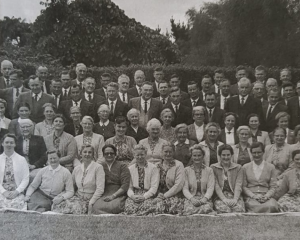The taxi industry is set for its biggest shake-up in 30 years following the announcement of sweeping changes that will bring its drivers and those from rival Uber under the same rules.
The Government claims the move will make these services safer for passengers.
Ever since ride-sharing service Uber arrived in this country two years ago, traditional taxi companies have voiced concerns their new rivals had an unfair advantage because they were more lightly-regulated.
This had allowed Uber drivers to snatch business from taxis, whose operators had to jump through more hoops to become accredited.
The reform, announced by Transport Minister Simon Bridges this evening, would bring taxi companies, Uber and any other small vehicle services like dial-a-driver under one set of laws.
This, he argued, would provide an even playing field for all parties.
"This could be the biggest taxi sector reform since the late 1980s," Mr Bridges said.
"I think what we're doing is really lowering the compliance because we think there's a lot of unnecessary cost and compliance that might have fit another time, but now with the technological advancements, just isn't required," he said.
"We've levelled the playing field so all of the classes in the small passenger services are competing against each other whether that's taxis, Uber, dial-a-driver, shuttles and the like, and we think that's going to be far and away the best thing for consumers too."
Under the proposed new rules, all drivers would need to display a driver identification card and have a passenger or P endorsement to be able to operate a passenger service vehicle.
This includes a police check, a fit-and-proper person inspection and regular checks that the driver is able to provide a transport service.
The time to acquire a P license has dropped from 55 days to around 20 and by the time the reform was in place the cost and time would have dropped even further, Mr Bridges said.
He said taxis would operate in a similar way to before, but some previous requirements would no longer apply.
The most noticeable of these would be the the signage rules for taxis, which now won't have to display information about fares, mandatory branding, or information supplied in Braille.
"I think they'll keep [the branding] but it will no longer be a requirement," Mr Bridges said.
"[Drivers] won't be required to do an area knowledge test and all of these changes are on the basis that what was required for common sense reasons in 1980 no longer is with technology and innovation."
Safety was as a major focus in the reform with all vehicles required to have a security camera except in circumstances such as Uber where technology means driver and passenger information was recorded.
Mr Bridges stressed that safety was likely to increase rather than drop with the reform.
"I'm absolutely clear that with the P endorsement remaining intact and the other requirements, and in-vehicle cameras - it will be as safe and in fact I believe with the right kind of technological changes, will enhance safety," he said.
Other requirements being removed for companies or operators included the need to belong to an approved taxi organisation, a certificate of knowledge or law and practice, a Passenger Service License and driver panic alarms monitored 24/7 from a fixed location.
Mr Bridges said the reform was a necessary response to changes in the industry including new technology and services, and to ensure the sector was competitive and delivering maximum benefit to consumers.
The new system has to go through regulatory process before it become laws with changes likely to be introduced in 2017.
- by Holly Ryan












